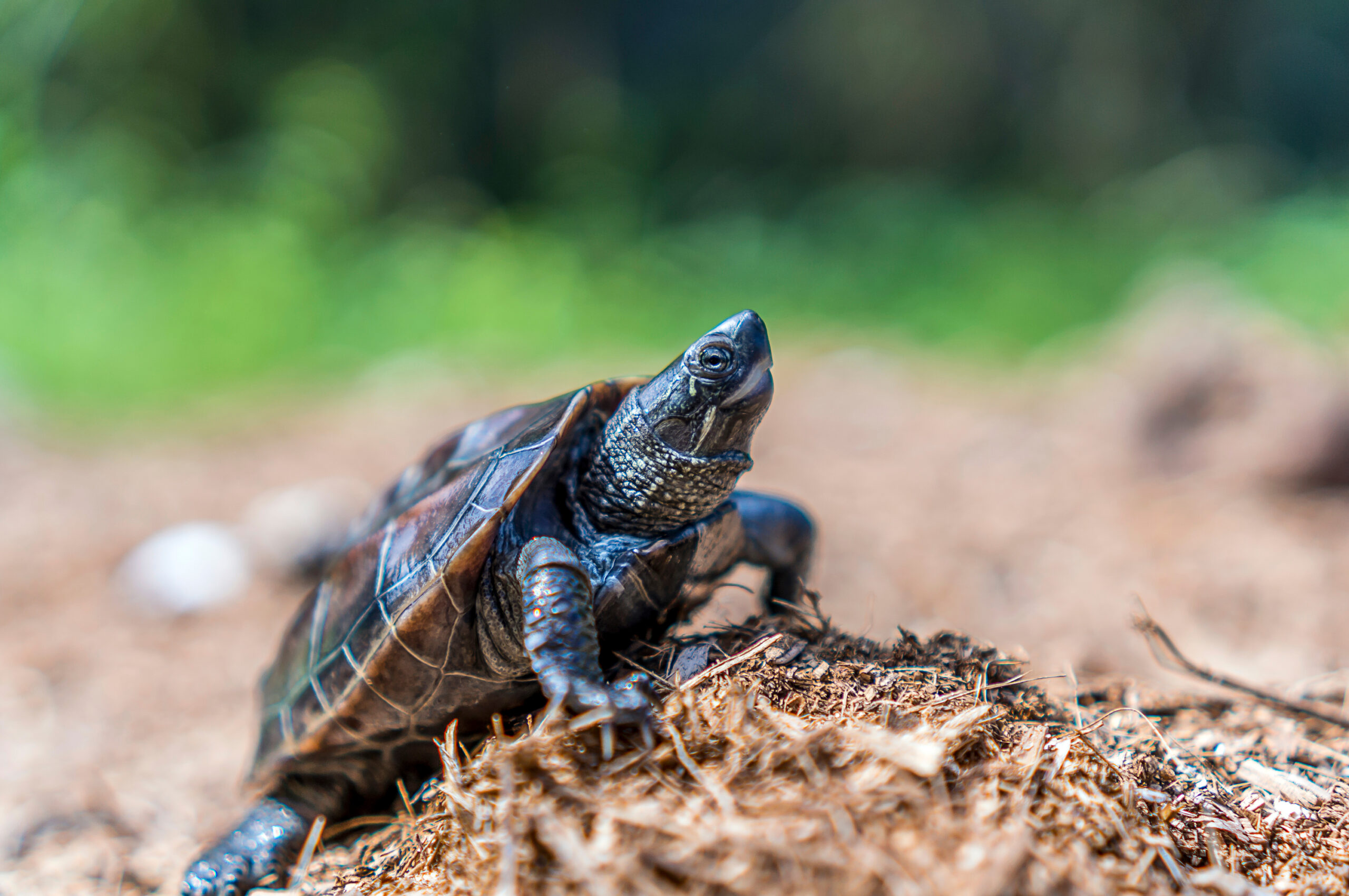Chinese pond turtle (Mauremys reevesii) – a small semiaquatic turtle
The Chinese pond turtle (Mauremys reevesii) is a good choice to start terrarium adventure, as it is one of the smaller species of semiaquatic turtles and can forgive minor mistakes of a beginner terrarium hobbyist.
What does a Chinese pond turtle look like (Mauremys reevesii)?
Mauremys reevesii is a species of semiaquatic turtle in the family Geoemydidae. As all other turtles, it belongs to the reptile community, as evidenced by, among other things, dry, poorly permeable skin, cold-bloodness and laying eggs in lime shells on land. Thanks to their carapace turtles do not resemble any other animal and their exact origin is still unknown.
Their shell evolved from a combination of ribs and the spinous processes, which form bony plates. The plates are covered with keratinized discs, which form the outer layer of the shell. The skin of the head, tail and limbs is covered with smaller and larger scales. The head is set on a movable neck and can be pulled under the carapace in case of an emergency. The jaws have no teeth; instead, they are equipped with sharp horn strips that are constantly growing and are subject to abrasion. Turtle eyes have movable eyelids. The limbs are equipped with claws, and they have a membrane between their toes. The Chinse pond turtles grow up to about 15 cm in carapace length and have a tail of similar length.
Habitat of Chinese pond turtles
Chinese pond turtles live in: China, North Korea, South Korea, Hong Kong, Taiwan and Japan. It is suspected that the Japanese population is the result of historical artificial reintroduction of the species.
How long does a Chinese pond turtle live?
If provided with a properly arranged aquaterrarium, proper diet and care, the Chinese pond turtle can live more than 20 years in captivity.
Aquaterrarium for Chinese pond turtles
For a Chinese pond turtle you need an aquaterrarium with dimensions of min. 80 x 40 x 40 cm. The first two dimensions refer to the bottom area. You can adapt for these needs a standard aquarium, but with a stable land section, which the turtle can freely enter. Heat and UVB sources in the form of proper bulbs and radiant heaters should be installed above the land section.

Be sure to place the heat source at a safe distance to prevent burning the turtle. You don’t need UVB source if the turtle is provided with a varied diet containing adequate calcium and vitamin D3, based on Tropical foods for example. The temperature under the heat source should be about 32-35°C while the water temperature should be about 23-26°C. It is very important to keep the water clean through efficient filtration and periodic partial water changes. It is worth introducing to the aquarium bacteria that support and carry out the decomposition of ammonium compounds. Tropical Bacto-Active and Tropical Nitri-Active products are perfect for this.
What does a Chinese pond turtle eat?
Young Chinese pond turtles are predators. In the wild, they feed on aquatic invertebrates such as shrimps, snails and insect larvae as well as small vertebrates in the form of fish, small amphibians and their tadpoles. However, as they grow older, a large portion of their diet is based on algae and aquatic plants. Therefore, adult Chinese pond turtles are omnivores with a high need for plant foods.
For this species we can recommend the following ready-made Tropical foods: Biorept W, Biorept Supreme Young and Biorept Supreme Adult, as well as Reptiles Carnivore and Reptiles Herbivore.
Do Chinese pond turtles often get sick?
Chinese pond turtles are strong and hardy animals. If properly maintained and fed, they are not susceptible to any common diseases. The most typical complaints are colds and conjunctivitis. These occur primarily when you do not provide the turtles with an appropriate temperature range and when the aquaterrarium is located in a place exposed to frequent drafts and sudden large temperature swings. Vitamin A deficiencies promote eye diseases such as conjunctivitis. Therefore, a varied diet and the use of balanced foods that contain vitamins are important.
Is the Chinese pond turtle suitable for aquarium with fish?
The Chinesepond turtle is not suitable for aquarium with fish, as it needs free access to a dry island where it can bask under a source of heat and UVB. It could also bite or eat smaller and less agile aquarium fish. This does not mean that we cannot keep fish in the water part of the aquaterrarium to add variety to the tank. However, be sure to maintain proper water quality and keep in mind that the turtle may treat such fish as food.
Do Chinese pond turtles bite?
The Chinese pond turtles can bite painfully and even make you bleed. Admittedly, they do not have teeth, but instead they have sharp horny ridges that allows them to tear off bits of food. Fortunately, its bite force and jaw size are considerably smaller than its American relatives in the genera Trachemys or Pseudemys.










